BY REYN RICAFORT ’25
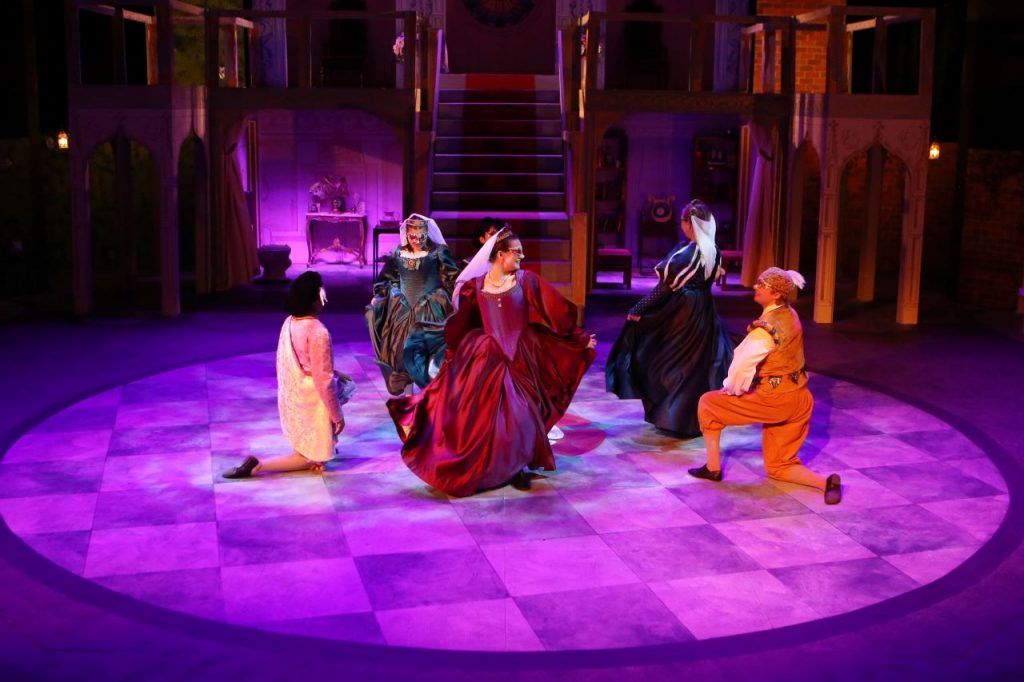
Imagine, a party of masked revelers in 16th-century dress.
The revelers emerge from dimly-lit corners, swaying elegantly to bard music with a poignant air of composure and form. Some kneel gallantly on the ground while the rest turn away, brushing their skirts ever so slightly across the floor. From high above, The Grey family enters, descending down the stairs as if they owned the place (which in fact they did).
The image is nothing short of a scene from Barbie as the Princess and the Pauper (2004), with audience members undoubtedly enchanted by the unfolding world before them. But, just as drool drips from the corners of the mouth, punk-rock music blasts from the speakers, and the revelers frolic feverishly, possessed by something that indeed could not exist in the 16th century. The music and dancing are deafeningly contemporary, with some dancers shaking their bums to audience members without reprieve. Ah, the joys of collegiate theater.
Skidmore Theater opened its Mainstage production of After Jane by Rachel Luann Strayer, directed by Skidmore Theater faculty Teisha Duncan, last Friday to an excited audience. It was the play’s world premiere and was thus accompanied by a heightened sense of eagerness from those aware. The first few minutes of the show were a spectacle to behold with the sudden shift in tone from historical to contemporary, a disorienting yet joyous experience. The scene was the perfect introduction to After Jane, a show that would rely on this disruption of time and place to bring to light historical events that seem pertinent and relevant to today’s time. But, just as the play is serious at heart, it is also ridiculously funny.
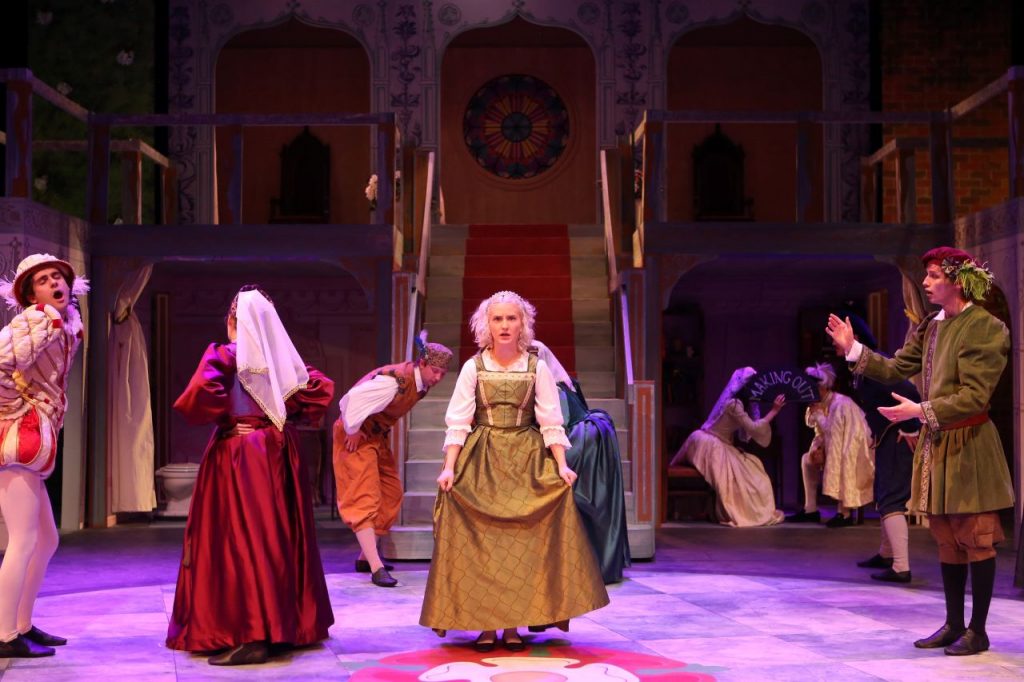
The play follows the true story of Lady Jane Grey who was queen of England for nine days before being executed at the age of sixteen. The play tells a satirical but profound retelling of the tragic story with Act 1 being accurately set in the 16th century during Lady Jane Grey’s life and Act 2 being set in the present day around a different Jane that eerily reflects the same struggles of Jane from the past.
Lady Jane Grey, fifteen, is a bookworm and despises her new fiance Guilford who can’t seem to keep his lips to himself at the Grey family party. Jane’s younger sister Kat, both charming and insecure, finds Jane’s attitude insufferable. Mary, the youngest of the Grey sisters, floats mysteriously in the back with her hump, popping into conversations every now and then without so much as a warning. The sisters are dynamic, discussing issues that range from inter-family marriage to the regular executions that filled their days. Jane bemoans the idea of being wedded when more pressing issues in the world, like economic inequality and religious warfare, need attending to, a sentiment Kat and their mother Frances disapprove of. But, as young and playful as the sisters may be, Jane is eventually thrust into the position of queen to rule over England, a responsibility even she recognizes is not fit for a teenager despite her parents’ excitement. Her nine-day reign ends with her execution alongside her father Henry, and her fiance Guilford.
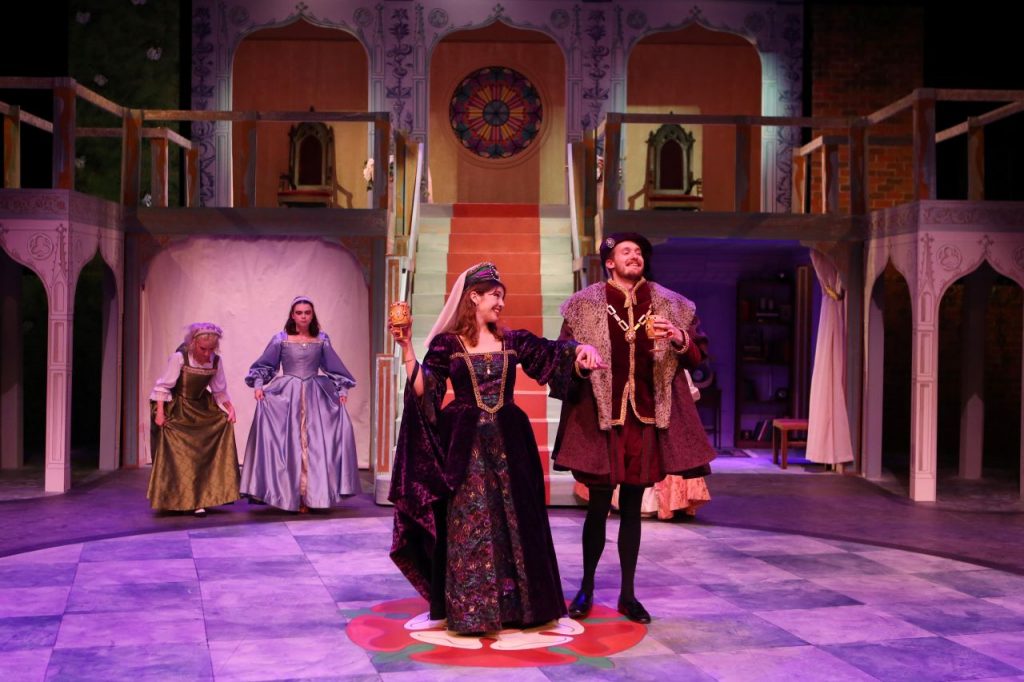
The three character’s executions trail off by jumping into Act 2 when present Jane dies in a car crash with Henry and Guilford after driving back from her high school graduation, furious that she had to leave early to pick up her drunk father from jail. Left to mourn the death of the three characters, Frances, Mary, and Kat grapple with the question of moving on. Kat and Mary grieve the death of their late sister with both longing and a shared critique of the way Jane at times neglected the world around her in favor of the world within her books. Frances, crazed and almost psychotic, attempts to move on too quickly, throwing away the frames of the dearly beloved and mistaking a helping hand from their pastor John as an invitation to a date. In the end, the sisters reckon with the state of their love affairs – Kat with Jane’s ex-boyfriend Edward and Mary with equally bizarre Thomas – and decide that “love is worth it” despite a not-so-great past, that being the bloody deaths of their sister, father, and her boyfriend. The audience is left crossing their fingers that Frances controls herself and refrains from asking her therapist out.
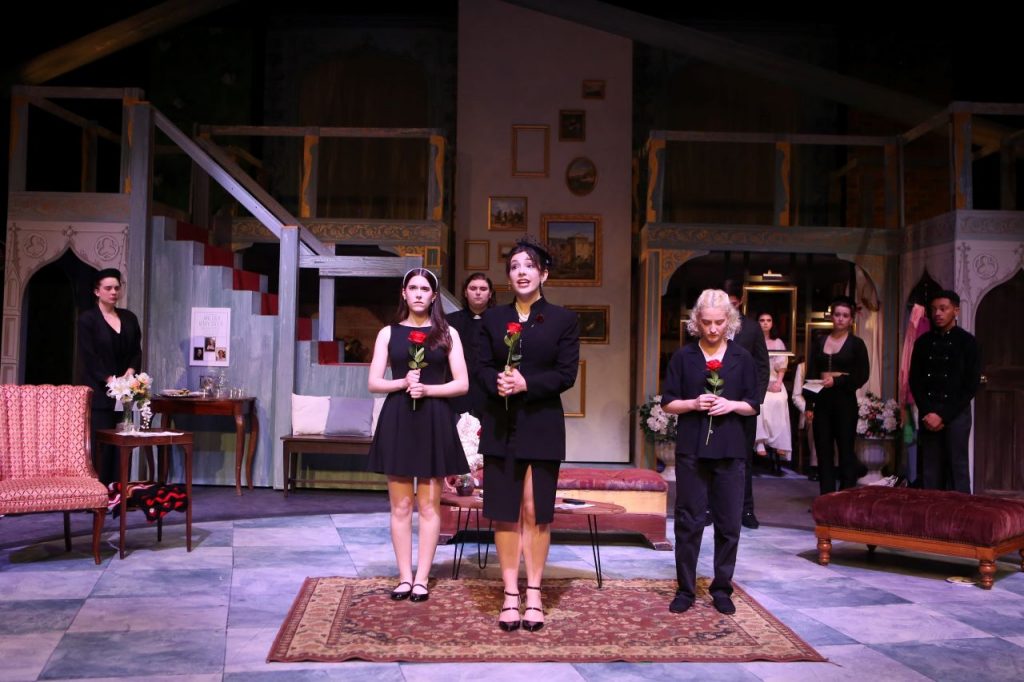
One of the key aspects of the play worth noting is its refusal to follow the constraints of time and place, with some characters going as far as to reference events that happen in the future. One example is when 16th century Mary in Act 1 talks about her hump and explains to Thomas that since scientists will not be able to diagnose cases of juvenile thoracic kyphosis until 1921 (which is what she has), she will presently be known as “ Crouchback Mary ” (Strayer). In addition, the characters speak with utterly contemporary voices, refusing to abide by any pattern of speech that evokes anything of the 16th century. Of course, I was neither alive back then nor am I a dialect expert, so take my analysis with a grain of salt. In simpler terms: I understood what the characters were saying. What results from this almost flippant disregard of time and place is a heightened emphasis not on the world of the characters, but on the issues that pervade both the past and present. Issues such as the institution of marriage that Jane rails against, the question of broken family dynamics, and the phenomenon of teenagers being deprived of their youth in order to fulfill overly mature responsibilities (like being queen). Indeed, by emphasizing the contemporary essence of the play, the play affords the audience the ability to relate to the 16th-century characters, as if to say that though time may split the “now” from the “then”, we are nonetheless tethered to the past by issues we have yet to resolve.
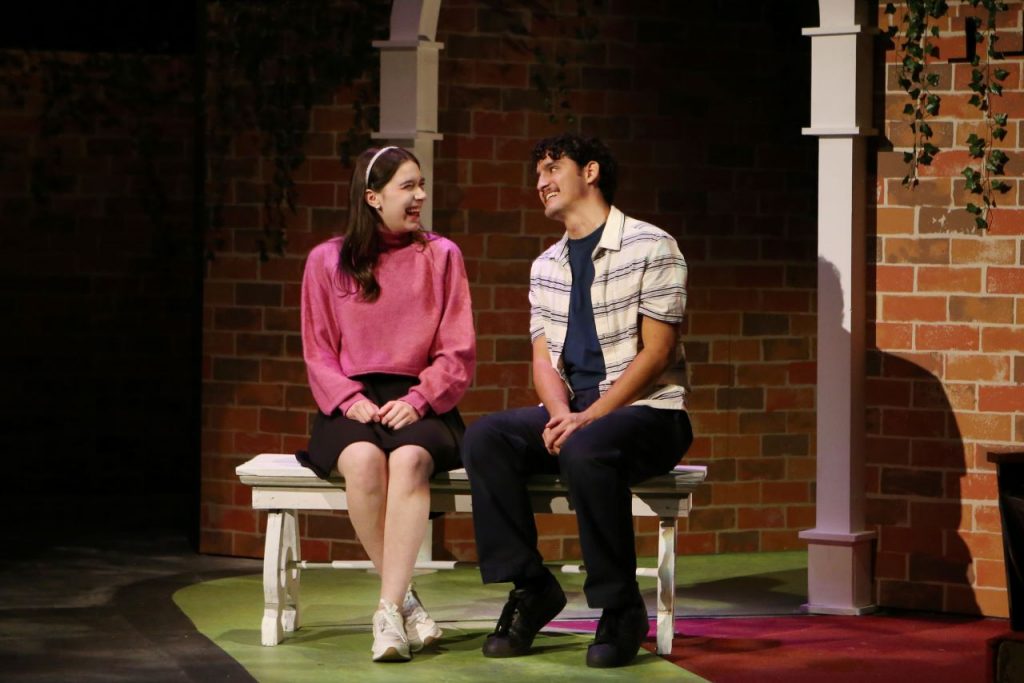
Overall, the play seems to embrace flippancy, but in an intentional way. Teisha Duncan, a master at comedy, leans into the show’s campiness with evocative blocking, impeccable dance scenes, and gigantic props. During the wedding scene, I remember being thoroughly fascinated by the colossal presents that the dancers twirled in the air. One dancer even carried an enormous platter of fruit where not a single grape moved from its place despite the dancer practically spinning the dish on her fingers. What resulted was an experience where recklessness, imagination, and exploration were set to roam free. By refusing to be downright “serious” and even realistic, the play gives license to relish in the ambiguity of youth, where boundaries don’t seem to exist and where everything seems bigger and more alive. It cultivates a sense of understanding, from the audience’s perspective, that we are thoroughly in the experience of the young characters in the show, some of who are stripped of the ability to playfully explore themselves in a world of superficial rules and definitions.
Youth, both past and present, share the essential quality of self-inquiry where crossing boundaries helps us define such boundaries more clearly and where making mistakes delineates what is “right”. The show illustrates the deprivation of that opportunity with 16th-century Jane who is crowned queen on her sixteenth birthday, or with the present Jane who is entrusted with the responsibility of looking after her alcoholic father. Indeed, the show centers on the experiences of the young characters themselves, who work with one another to decide, in this age of relativism, what’s right from wrong and most importantly, what actions choose compassion and love.
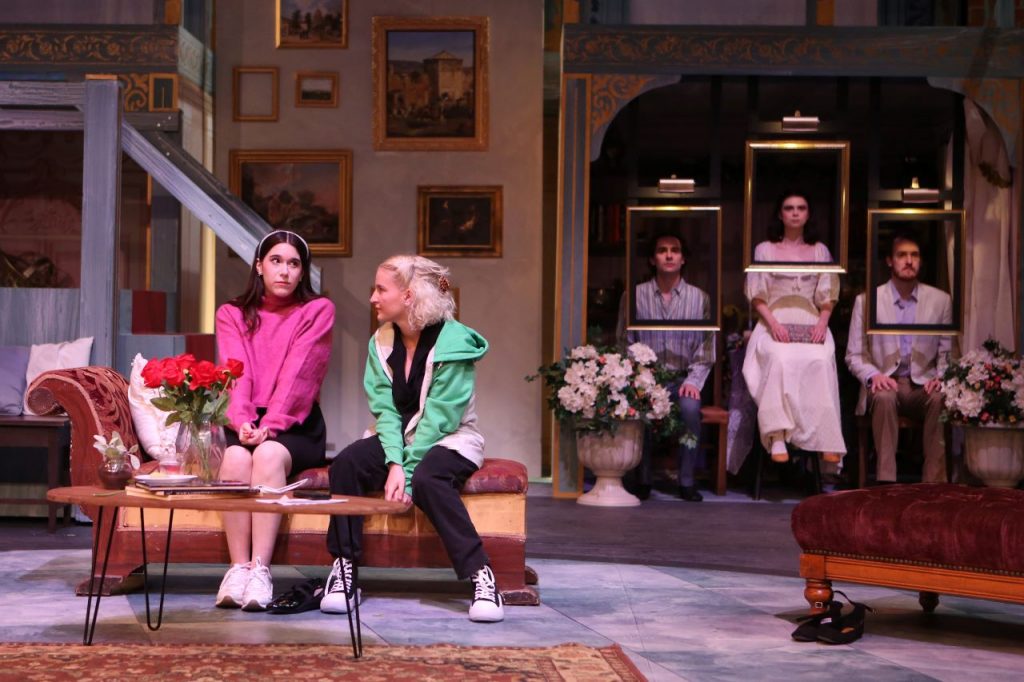
Props to the incredible cast of After Jane for juxtaposing humor with seriousness without losing the nuance and specificity. It was a satisfying balance between stakes and steaks…if that makes any sense. Also, bravo to the chorus for providing an incredible foundation for the show. The chorus is an integral part of any production, and it was evident that Duncan utilized them to the fullest extent. They provided movement, both physically and metaphysically, and a reference for the audience to understand the ethos and tonality of each scene they were present in.
All in all, the show was a celebration– a celebration of what theater can be, and a celebration of the Seniors whose last opening night it was at Skidmore College. Alas, adieu, adieu my beautiful Seniors. Though you may leave us in body and mind, you will always be tethered back home to the JKB stage. As After Jane shows us, distance is relative.
Exeunt!
Photos by Susan Kessler
***
Reyn Ricafort is the Editor-in-Chief of the Skidmore Theater Living Newsletter
